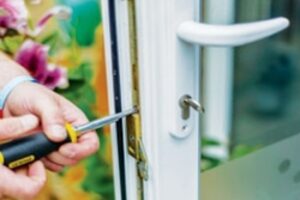This Is The Ultimate Cheat Sheet For Back Door Locks
Understanding Back Door Locks: Types, Features, and Installation Guide
Back door locks are an essential aspect of home security that should not be ignored. While mortise lock replacement of house owners focus primarily on front door security, the back door can be a main entry point for burglars. Therefore, comprehending the various kinds of back door locks, their features, and installation options is necessary for enhancing security. This article intends to provide a thorough introduction of back door locks, making sure property owners make notified choices about their security.
Types of Back Door Locks
Back door locks can be found in various styles and performances. Here are the most common types:
1. Deadbolts
Deadbolts are one of the most dependable types of locks. They supply a higher level of security because they can't be easily controlled like spring bolts.
- Single Cylinder Deadbolt: Operated with a key on the outside and a thumb turn on the inside.
- Double Cylinder Deadbolt: Requires a crucial to run on both sides, improving security, particularly if there is a window near the door.
2. Smart Locks
The technology-driven smart locks provide convenience and security by permitting access through mobile phones or keypads.
- Keyless Entry: Eliminates the requirement for physical keys.
- Remote Access: Enable users to lock/unlock doors from anywhere.
3. Knob Locks
Knob locks are often used in combination with deadbolts. They supply standard security but are simpler to bypass.
- Standard Knob Lock: Commonly discovered on interior doors.
4. Lever Handle Locks
Lever handle locks provide ease of use and are typically found on back doors.
- Passage Handle: Typically used on doors that do not require locking.
- Entry Handle: Designed for doors that need to be locked and opened from outside.
5. Electronic Locks
These locks utilize electronic mechanisms for locking and opening, providing enhanced functions for security.
- Keypad Entry: Users go into a code to gain access.
- Biometric Locks: Use fingerprints or facial acknowledgment for gain access to.
6. Chain Locks
Chain locks are mainly utilized for additional security rather than as a main locking mechanism.
- Basic Chain Lock: Installed on top corner of a door, restricting opening.
7. Move Bolts
Slide bolts are an additional locking mechanism often utilized on back doors for extra security.
- Vertical Slide Bolt: Installed on the top and bottom of a door frame.
- Horizontal Slide Bolt: Offers locking ability from side to side.
Lock Type
Level of Security
Relieve of Use
Expense Range
Deadbolts
High
Moderate
₤ ₤
Smart Locks
High
High
₤ ₤ ₤
Knob Locks
Low
High
₤
Lever Handle Locks
Moderate
High
₤ ₤
Electronic Locks
High
High
₤ ₤ ₤ ₤
Chain Locks
Low
Moderate
₤
Slide Bolts
Moderate
Moderate
₤ ₤
Features to Consider
When selecting back entrance locks, several features need to be thought about:
- Material Quality: High-grade materials resist tampering.
- Key Control: Consider locks with limited keyways to increase security.
- Weather condition Resistance: Locks for external doors must hold up against weather condition aspects.
- Alarm Systems: Some locks come incorporated with alarm functions for additional security.
- Battery Life: For smart and electronic locks, inspect the battery life.
Installation and Maintenance
Installation Steps
- Gather Tools and Materials: Required tools might include a drill, screwdriver, and measuring tape.
- Eliminate Old Lock: If replacing, get rid of the existing lock thoroughly.
- Prepare Door for New Lock: Measure and drill holes if required, following the specific lock directions.
- Install the New Lock: Position the lock properly and secure it with screws.
- Test Functionality: Ensure the lock operates efficiently before completing the installation.
Maintenance Tips
- Regular Checks: Inspect locks periodically for indications of wear or damage.
- Lubrication: Use graphite or silicone sprays to keep mechanisms working efficiently.
- Battery Replacement: For smart and electronic locks, change batteries at recommended periods.
FAQs
What is the best kind of back door lock for security?
Deadbolts are normally considered the best choice due to their robust style. Integrating a deadbolt with a smart lock can provide improved defense.
Can I set up a back entrance lock myself?
Yes, numerous back entrance locks are created for DIY installation. However, if you are uncertain, hiring an expert locksmith professional can make sure correct installation and security.
How typically should I alter my back entrance locks?
It is recommended to change your locks when you move into a new home or if you lose your secrets. In addition, consider altering locks every couple of years or if you experience home invasion.
Are smart locks safe?
Smart locks are usually safe, but it's vital to select top quality brand names with good security features, like file encryption and secure keyless entry.
What should I do if my back door lock is stuck?
If a lock is stuck, attempt oiling it before requiring it. If it still won't turn, speak with a locksmith professional to prevent triggering damage.
Back entrance locks are vital to any home's security system. House owners need to pick the right type, think about key features, and ensure proper installation and upkeep. By comprehending the alternatives readily available and employing best practices for security, homeowners can safeguard their homes more efficiently. Investing in quality locks considerably improves safety while providing comfort. Whether going with a standard deadbolt or a modern smart lock, making notified choices can significantly impact overall home security.
